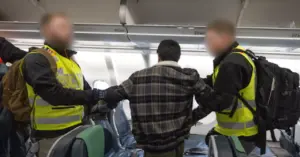
Bankruptcy filings have notably increased in North Dakota and western Minnesota, according to records published on July 26, 2025. A total of nine individuals in North Dakota and several from multiple counties in Minnesota have filed for bankruptcy, reflecting significant financial distress in the region.
In North Dakota, individuals filing Chapter 7 bankruptcy include John Ryan Daniels from Columbus, Kristen Marie Sherette from Grand Forks, Brittany Leigh Gamboa, also known as Brittany Knoff and Brittany Bryant from Grand Forks, Jared Thomas Hardy from Fargo, and Todd A. Humes, who operates under the name TAH Enterprises in Jamestown, who has opted for Chapter 13 bankruptcy for reorganization of debts.
Chapter 7 filings indicate a petition to liquidate assets and discharge debts, while Chapter 13 allows wage earners to adjust their debts. This trend highlights the ongoing challenges faced by individuals and businesses in managing financial obligations, particularly in the current economic climate.
Minnesota reported an array of bankruptcy filings across counties including Becker, Clay, Douglas, Grant, Hubbard, Mahnomen, Norman, Otter Tail, Polk, Traverse, Wadena, and Wilkin. Notable filings include Shirley Ann Moe from Gary, Jessica Ann Melby from East Grand Forks, and Lorrie Eldon Thompson from Ottertail, all filing for Chapter 7 bankruptcy. Additional filings include Katie Ann Parkos from Alexandria and Anne Mary Lee from Perham, both also under Chapter 7.
The rise in bankruptcy filings serves as a barometer of economic health in the region, reflecting the struggles many face in meeting financial commitments. As communities in North Dakota and Minnesota navigate these challenges, the implications of such financial distress could resonate beyond individual households, impacting local economies and businesses.
With the continuing financial strain evident in both states, local authorities and financial advisors may need to focus on providing support and resources for those affected, ensuring that individuals can find pathways toward recovery and stability.






